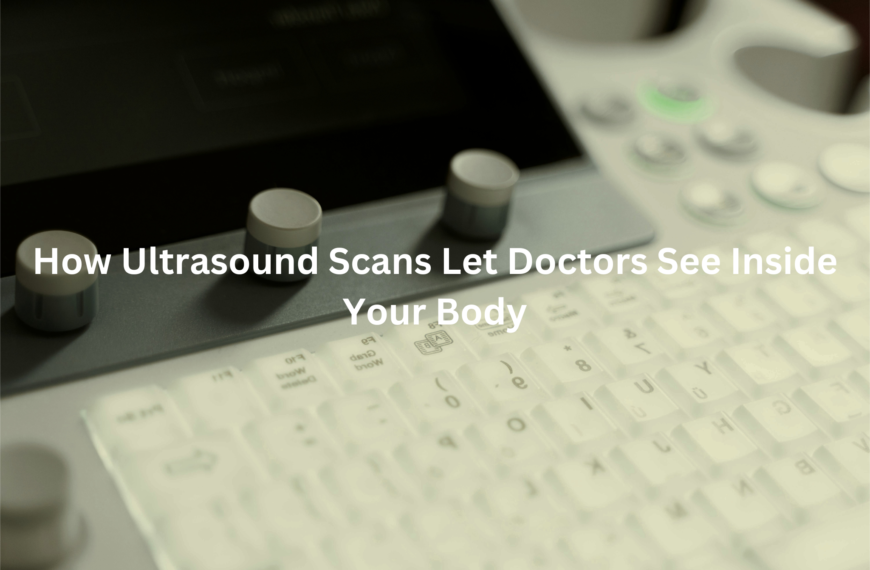Learn how a barium swallow helps diagnose swallowing issues, reflux, and digestive conditions using real-time X-ray imaging.
A barium swallow is a specialised X-ray test that examines the oesophagus and upper digestive tract. It helps diagnose conditions such as gastro-oesophageal reflux disease (GORD), hiatal hernias, and swallowing difficulties.
By drinking a liquid containing barium sulfate, doctors can observe its movement through the digestive system in real time, identifying any abnormalities.
Key Takeaways
- Accurate Diagnosis – Detects swallowing disorders, blockages, and acid reflux.
- Non-Invasive & Quick – The procedure takes only 10–15 minutes with minimal discomfort.
- Aftercare is Important – Drinking plenty of fluids helps flush out the barium from your system.
What is a Barium Swallow
A barium swallow isn’t the most pleasant test, but it’s one of the best ways to check for swallowing difficulties, reflux, and other digestive issues. Patients stand in front of an X-ray machine, wearing a hospital gown, holding a cup of thick, chalky liquid.
The radiologist asks them to take a few big sips—the barium coats the oesophagus, stomach, and upper small intestine, making these areas visible on an X-ray.
Unlike a barium meal, which focuses on the stomach and small intestine, a barium swallow examines the throat and oesophagus. The test uses fluoroscopy, a real-time X-ray, to show how the barium moves through the system. (1)
Key Details:
- Helps detect narrowed passages, reflux, tumours, and swallowing problems.
- Takes about 10–15 minutes.
- Patients may need to hold their breath briefly for clearer images.
- Minimal discomfort, but the barium has a chalky taste.
Who Needs a Barium Swallow
Credits: Ask The Doc
Not everyone needs this test, but if you’re struggling with swallowing, persistent heartburn, or food getting stuck, it could be just what your doctor orders.
You might need a barium swallow if you have:
- Trouble swallowing food or drinks
- Frequent coughing or choking when eating
- Unexplained weight loss due to swallowing issues
- Ongoing heartburn or acid reflux
- A sensation of food getting stuck in your throat
- Pain when swallowing
Doctors also use barium swallows to check for structural issues, like hiatal hernias, where part of the stomach pushes through the diaphragm. It’s also useful for diagnosing oesophageal motility disorders, which affect how the oesophagus moves food to the stomach.
For children, the test helps detect congenital abnormalities in the throat and digestive tract. In older adults, it’s often used to assess the risk of aspiration (when food or liquid enters the lungs instead of the stomach).
How to Prepare for a Barium Swallow
The good news? There’s not much prep involved, but a few key steps can help ensure accurate results.
Before the test:
- No food or drinks for at least six hours – fasting keeps the digestive tract clear.
- Avoid smoking or chewing gum – these can trigger stomach acid production.
- Remove jewellery and wear loose clothing – metal can interfere with X-rays.
- Let your doctor know if you’re pregnant – X-rays can pose a risk to the baby.
- Mention any allergies – while rare, some people react to contrast materials.
While the radiation exposure from a barium swallow is low, doctors may suggest alternative tests if you’re pregnant or undergoing frequent X-rays.
What Happens During the Test
The procedure is pretty straightforward, though if it’s your first time, it might feel a bit odd.
- Drinking the Barium: You’ll be given a cup of thick or thin barium liquid—it’s sometimes flavoured, but let’s be honest, it still tastes a bit like liquid chalk. If needed, you may also swallow a barium tablet to help detect small blockages.
- X-ray Positioning: The radiologist will take images from different angles—standing, lying down, even rolling onto your side—to get a full picture.
- Holding Your Breath: At times, you’ll be asked to hold your breath for a few seconds to improve image clarity.
- Fluoroscopy Imaging: As the barium moves, the radiologist captures real-time X-ray images, tracking how your oesophagus and stomach function.
The whole test takes about 10–15 minutes. Afterwards, you can go about your day—though you might notice some minor after-effects.
Side Effects & Aftercare
Most people feel fine afterwards, but there are a few things to expect.
Possible side effects:
- Mild nausea or bloating (especially if you had a large amount)
- Constipation – barium thickens stool
- White or pale-coloured stools for a day or two (completely normal)
Aftercare Tips:
- Drink plenty of water – this helps flush the barium from your system.
- Eat high-fibre foods – fruits, veggies, and whole grains can help prevent constipation.
- Look out for severe symptoms – if you experience severe stomach pain, difficulty passing stool, or vomiting, see a doctor.
Understanding Your Results
After the test, a radiologist will review the images and send a report to your doctor.
What normal results look like:
- The oesophagus and stomach appear smooth and correctly positioned.
- No abnormal narrowing, blockages, or masses.
- Food and liquid move through without issues.
What abnormal results might indicate:
- Gastro-oesophageal reflux disease (GORD) – stomach acid backing up into the oesophagus.
- Oesophageal strictures – narrow areas that make swallowing difficult.
- Hiatal hernia – part of the stomach pushing up into the chest.
- Tumours or abnormal growths – may require further tests.
If anything concerning shows up, your doctor may order additional tests like an endoscopy, MRI, or biopsy.
Barium Swallow vs. Other Imaging Tests
A barium swallow is useful, but sometimes other tests provide more detail, depending on the condition being investigated.
How it compares to:
- Barium meal: Similar but focuses more on the stomach and small intestine.
- MRI & CT scans: Offer more detailed imaging of soft tissues and surrounding organs.
- Endoscopy: Uses a tiny camera to provide a direct visual of the oesophagus.
For swallowing difficulties or reflux, a barium swallow is often the first step. If more detail is needed, your doctor may suggest further tests. (2)
Conclusion
A barium swallow is a simple, non-invasive test that helps diagnose swallowing difficulties, reflux, and digestive conditions. While the chalky liquid isn’t the most pleasant, the procedure is quick, with minimal side effects.
Drinking water and eating fibre-rich foods can help flush out the barium afterwards. If you’re experiencing trouble swallowing, ongoing heartburn, or food getting stuck, this test could provide the answers you need. Speak to your doctor to see if it’s right for you.
FAQ
What is a barium swallow?
A barium swallow is an imaging test used to check for issues in the upper GI tract, including the food pipe, cervical oesophagus, and thoracic oesophagus. It involves drinking barium sulfate, a white liquid, which coats the gastrointestinal tract and makes it visible on X-ray images. This test helps detect conditions such as gastroesophageal reflux disease, muscle disorders, and abnormal growths.
How is a barium swallow procedure done?
During the barium swallow procedure, the patient drinks a barium solution, which may be liquid barium or a barium tablet. A radiology technician then captures real-time X-ray images as the patient moves into different body positions, such as the upright position, horizontal position, and lateral position. The radiologist may take additional images from different lateral views for a clearer assessment.
What conditions can a barium swallow detect?
This test is used to identify hiatal hernia, bowel obstruction, esophageal motility disorders, and risk of aspiration. It can also help detect birth defects, medical conditions affecting the digestive tract, and changes in bowel habits. Sometimes, a barium esophagram is done to assess swallowing function.
How do I prepare for a barium swallow?
Patients are usually advised to avoid eating or drinking for a period before the test. At the time of booking, it’s important to inform the doctor about any medical conditions. Since there is some exposure to radiation, pregnant patients should notify their doctor beforehand.
What does a barium swallow feel like?
Drinking the barium liquid can feel thick and chalky. Patients may be asked to take sips of water after swallowing it. Some people experience temporary blurred vision, mild nausea, or changes in bowel movements after the test.
What’s the difference between a barium swallow and a barium meal?
A barium swallow focuses on the food pipe and upper GI tract, while a barium meal looks at the stomach and intestines. Both are types of barium examinations and fall under medical imaging tests.
Are there risks of radiation exposure?
Like all imaging tests, a barium swallow involves a small radiation dose. The risks of radiation exposure are minimal, but doctors always weigh the benefits of the test. In some cases, water-soluble contrast agents may be used instead of barium sulfate.
How can I prevent constipation after the test?
Since barium coats the digestive system, some people may experience constipation. Drinking plenty of fluids or lots of fluids and eating high-fibre foods can help. If bowel habits don’t return to normal, it’s best to consult a doctor.
Where can I find more information on barium swallow studies?
Trusted sources include StatPearls Publishing and Treasure Island. Be mindful of any potential financial relationships between publishers and ineligible companies when reviewing medical information.
References
- https://mydr.com.au/tests-investigations/barium-swallow-and-barium-meal-tests/
- https://www.hopkinsmedicine.org/health/treatment-tests-and-therapies/barium-swallow




